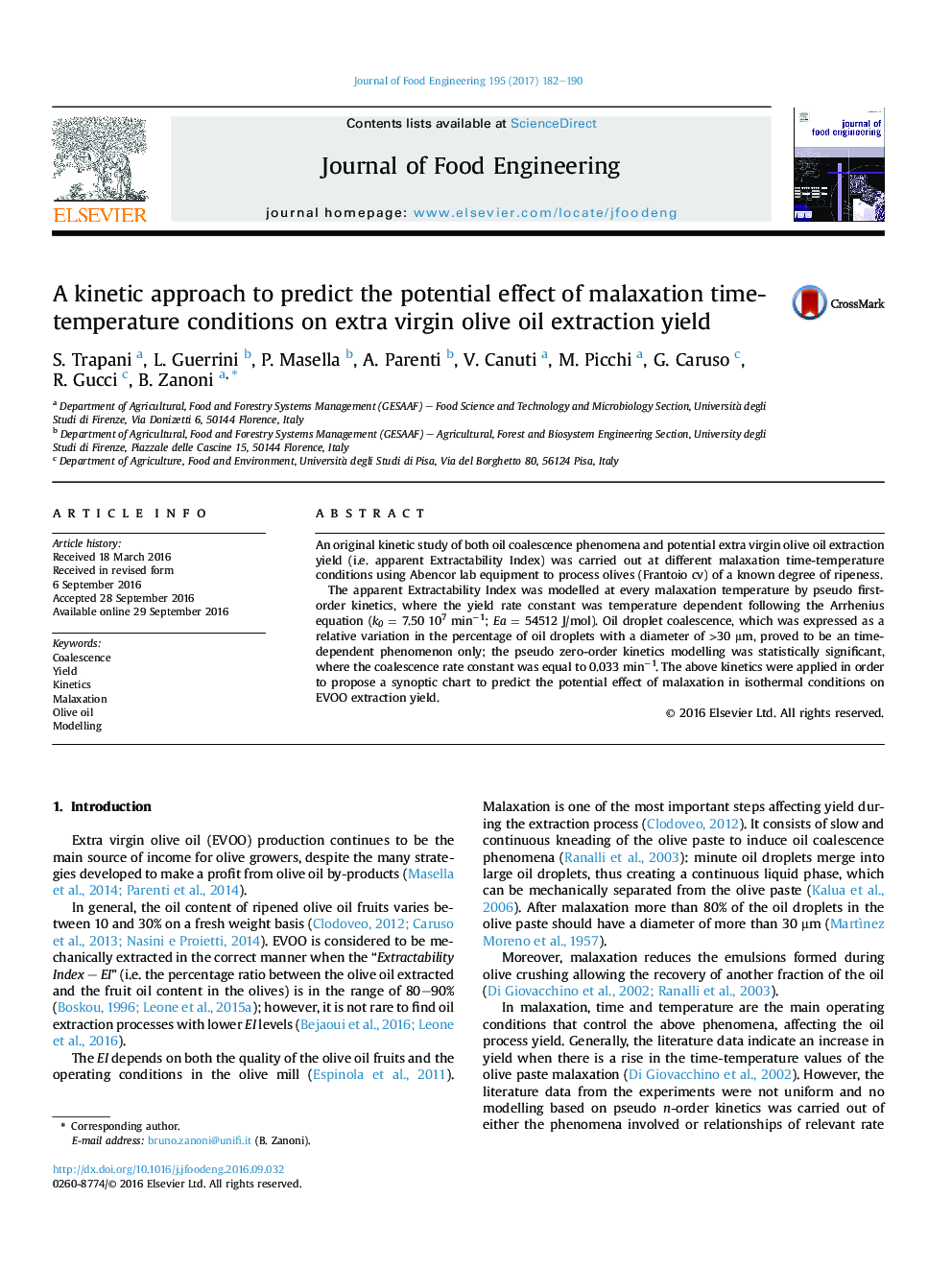| Article ID | Journal | Published Year | Pages | File Type |
|---|---|---|---|---|
| 6477611 | Journal of Food Engineering | 2017 | 9 Pages |
â¢An original experimental approach was used to study olive paste malaxation.â¢A time-temperature kinetic study was applied to predict malaxation phenomena.â¢An apparent Extractability Index and oil droplet coalescence phenomena were considered.â¢A synoptic chart was proposed to predict the potential effect of malaxation on yield.â¢Phenomena that condition oil extraction yield changed as a function of temperature.
An original kinetic study of both oil coalescence phenomena and potential extra virgin olive oil extraction yield (i.e. apparent Extractability Index) was carried out at different malaxation time-temperature conditions using Abencor lab equipment to process olives (Frantoio cv) of a known degree of ripeness.The apparent Extractability Index was modelled at every malaxation temperature by pseudo first-order kinetics, where the yield rate constant was temperature dependent following the Arrhenius equation (k0 = 7.50 107 minâ1; Ea = 54512 J/mol). Oil droplet coalescence, which was expressed as a relative variation in the percentage of oil droplets with a diameter of >30 μm, proved to be an time-dependent phenomenon only; the pseudo zero-order kinetics modelling was statistically significant, where the coalescence rate constant was equal to 0.033 minâ1. The above kinetics were applied in order to propose a synoptic chart to predict the potential effect of malaxation in isothermal conditions on EVOO extraction yield.
